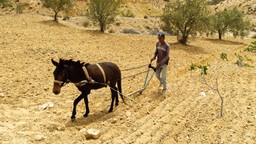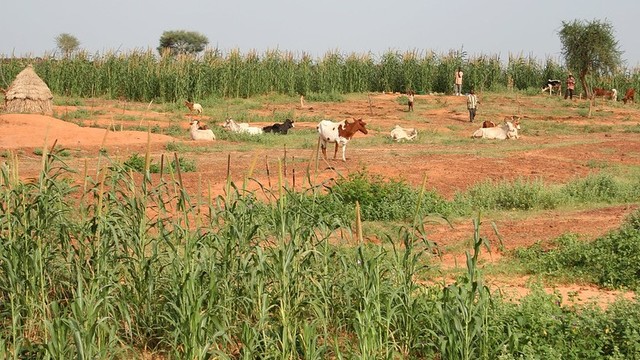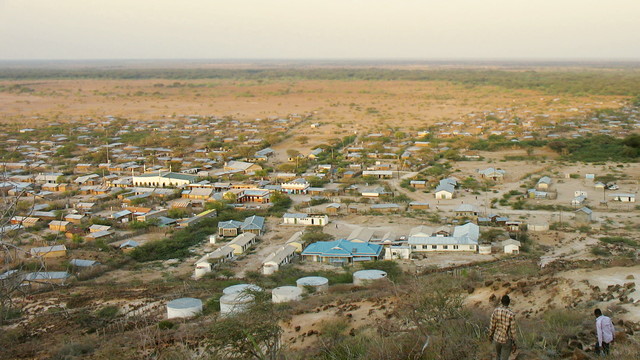Building research capacity for sustainable water and food security in drylands of sub-Saharan Africa (BRECcIA)
BRECcIA was an ambitious programme that developed capacity for impactful research production and dissemination in educational institutions in three sub-Saharan countries.

Millions of Kenyans depend on the Ewaso Ngiro river and its tributaries, but over-abstraction and changing weather patterns are reducing river flows (Photo: Denis Onyodi/Kenya Red Cross Society, Creative Commons via Flickr)
Climate variability is a key feature of dryland ecosystems across sub-Saharan Africa, where rain-fed agriculture and pastoralism characterises local subsistence and is the mainstay of national economies.
Climate change is increasing this variability, leading to more frequent climate shocks such as droughts and flooding events. And with many countries in this area experiencing population growth and rapid urbanisation, there is concern they will be unable to meet national targets for food and water security, leaving some countries continually dependent on imported food and food aid.
Despite the priority accorded to food and water security in national policy and strategic development visions, progress towards sustainable and equitable solutions that benefit all citizens remains elusive.
Policies and development interventions are hampered by deeply entrenched misunderstandings and misperceptions about the dynamics of dryland ecologies and livelihoods. Development discourse and common stereotypes typically frame these areas as fragile and degraded environments, characterising the natural climatic and environmental variability of these environments as a problem that needs to be addressed; a problem that will only get worse with climate change.
These views encourage particular kinds of top-down, resource-intensive development interventions that are maladaptive and further marginalise local vulnerable populations and ultimately increase carbon emissions.
What development discourse and policy interventions miss is the key point that climate variability and uncertainty has always been an inherent characteristic of the drylands, and that local people have already developed institutions and livelihood strategies to manage and take advantage of this variability.
To create an enabling space for locally led adaptation action to thrive, there is a therefore a need to challenge received wisdom and raise awareness of this local resilience and resourcefulness to ‘value variability’ to lead climate-resilient livelihoods.
The ‘Building research capacity for sustainable water and food security in drylands of sub-Saharan Africa (BRECcIA)’ project strengthened the capabilities of researchers at institutions in Ghana, Kenya and Malawi to carry out impactful and targeted research that leads to positive policy or practice change for water and food security.
At the same time, it helped build partnerships between African and UK universities and institutions and develop researchers' capacity in collaborative activities at all levels.
What is IIED doing?
Kenyatta University, in partnership with IIED, developed a professional short course for drylands policymakers and practitioners in Kenya.
Based around the theme of ‘valuing variability’, the course used the findings of applied empirical research to build an appreciation among national and local government planners of the logic and inherent resilience of existing indigenous local dryland livelihood systems in order to inform more progressive policy and development interventions.
The course explores the interactions between production systems and the environment, good governance and sustainable resource management. It prioritises the needs of the most vulnerable and marginalised people living under the poverty line in arid and semi-arid land (ASAL) areas.
While the development of the course was funded by the BRECcIA programme, from April 2022 the professional course became an independent commercial offering delivered by Kenyatta’s Capacity Development and Consultancy Services division. Tuition will be provided by its Department of Geography staff and invited expert guest speakers.
The course is intended for:
- Sectoral development and planning officers in national and county government
- Sectoral policymakers in national and county government
- Sectoral technical officers and practitioners at county level
- Development partners operating in ASAL areas
- Local administrators/leaders in ASAL areas
- Community opinion leaders in ASAL areas, and
- Curriculum officers in the academic and research community.
News and updates
Additional resources
Partners
Donors
BRECcIA is funded under the Research Councils of United Kingdom (RCUK) Global Challenges Research Fund (GCRF) programme for growing research capability to meet the challenges faced by developing countries (GROW)




